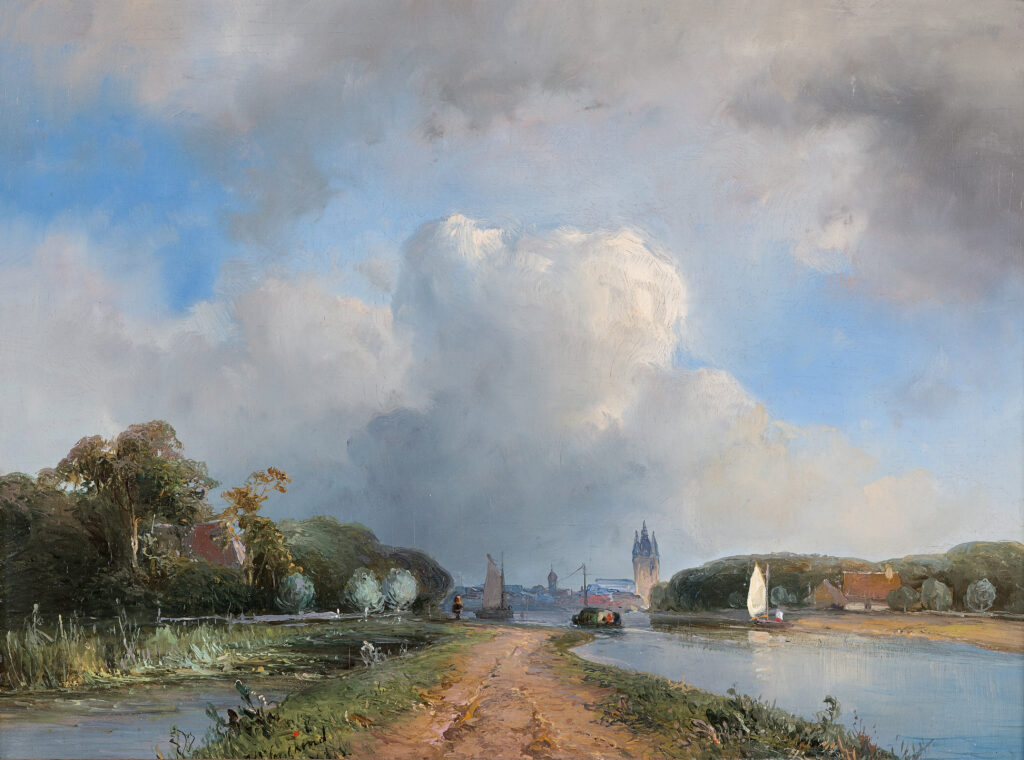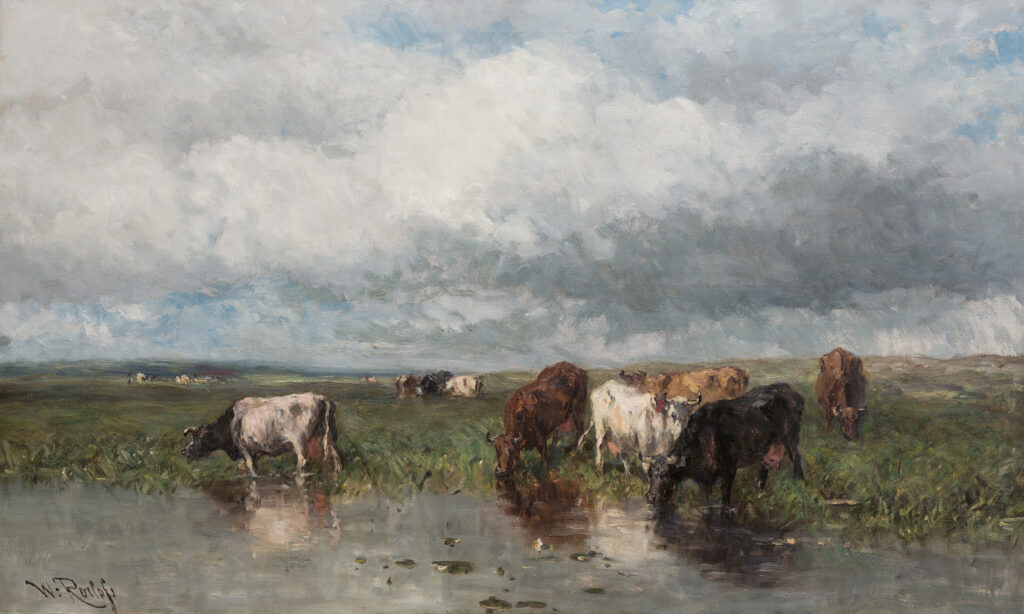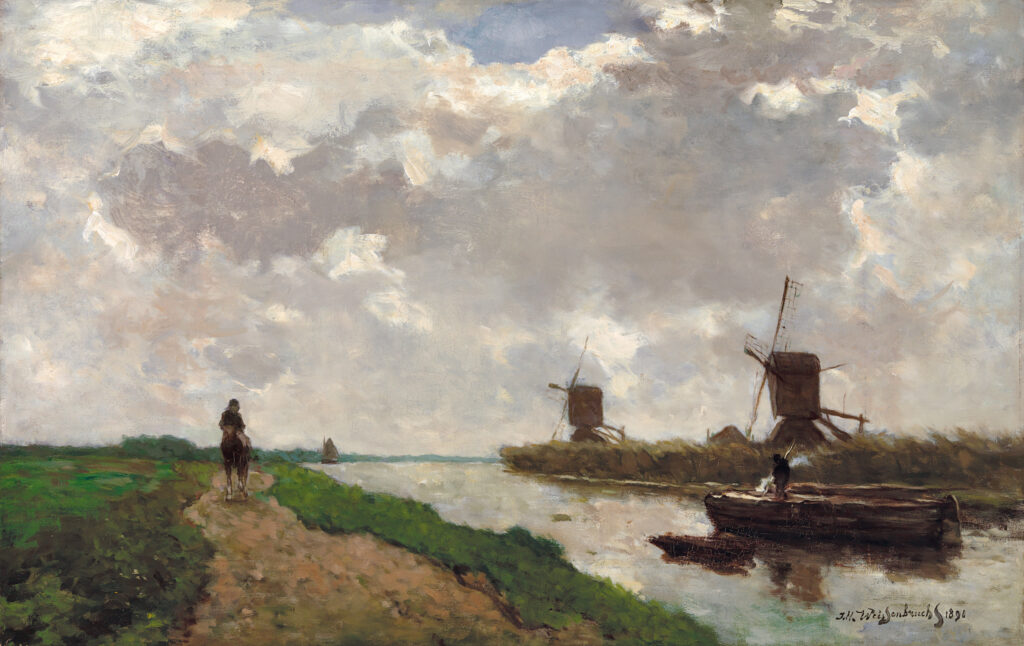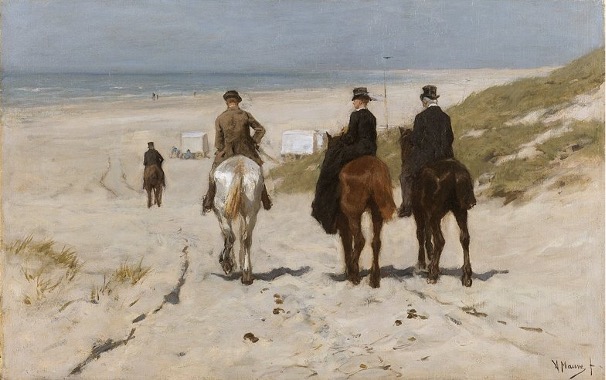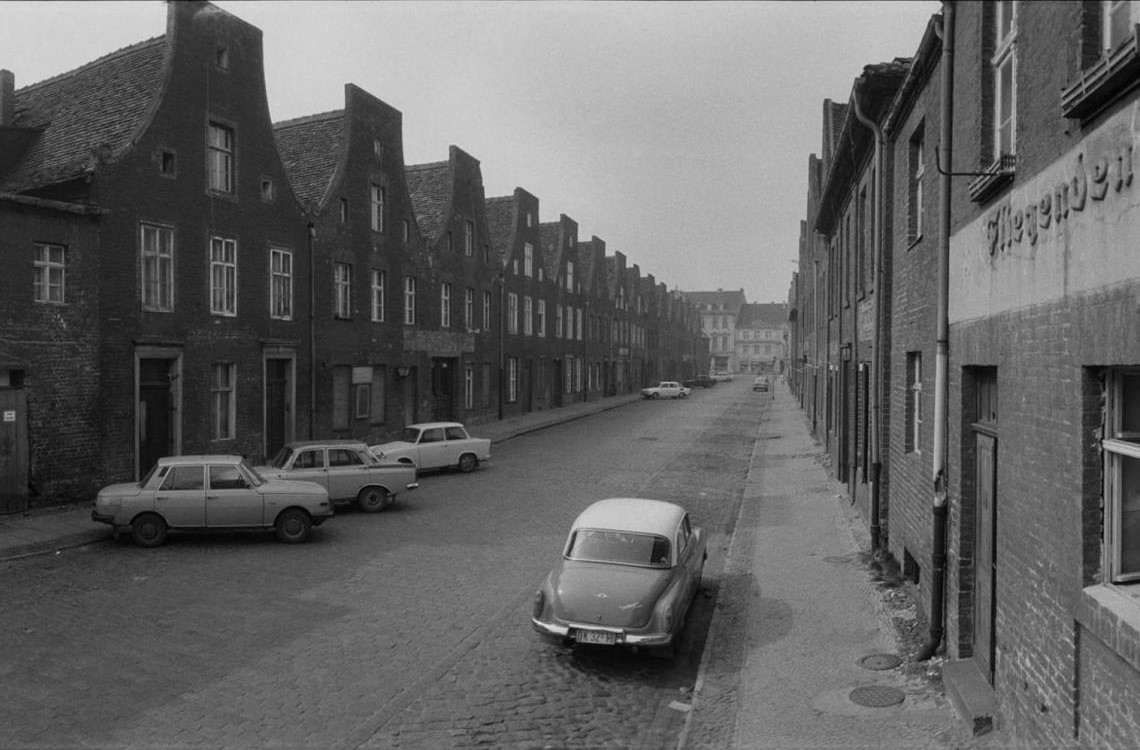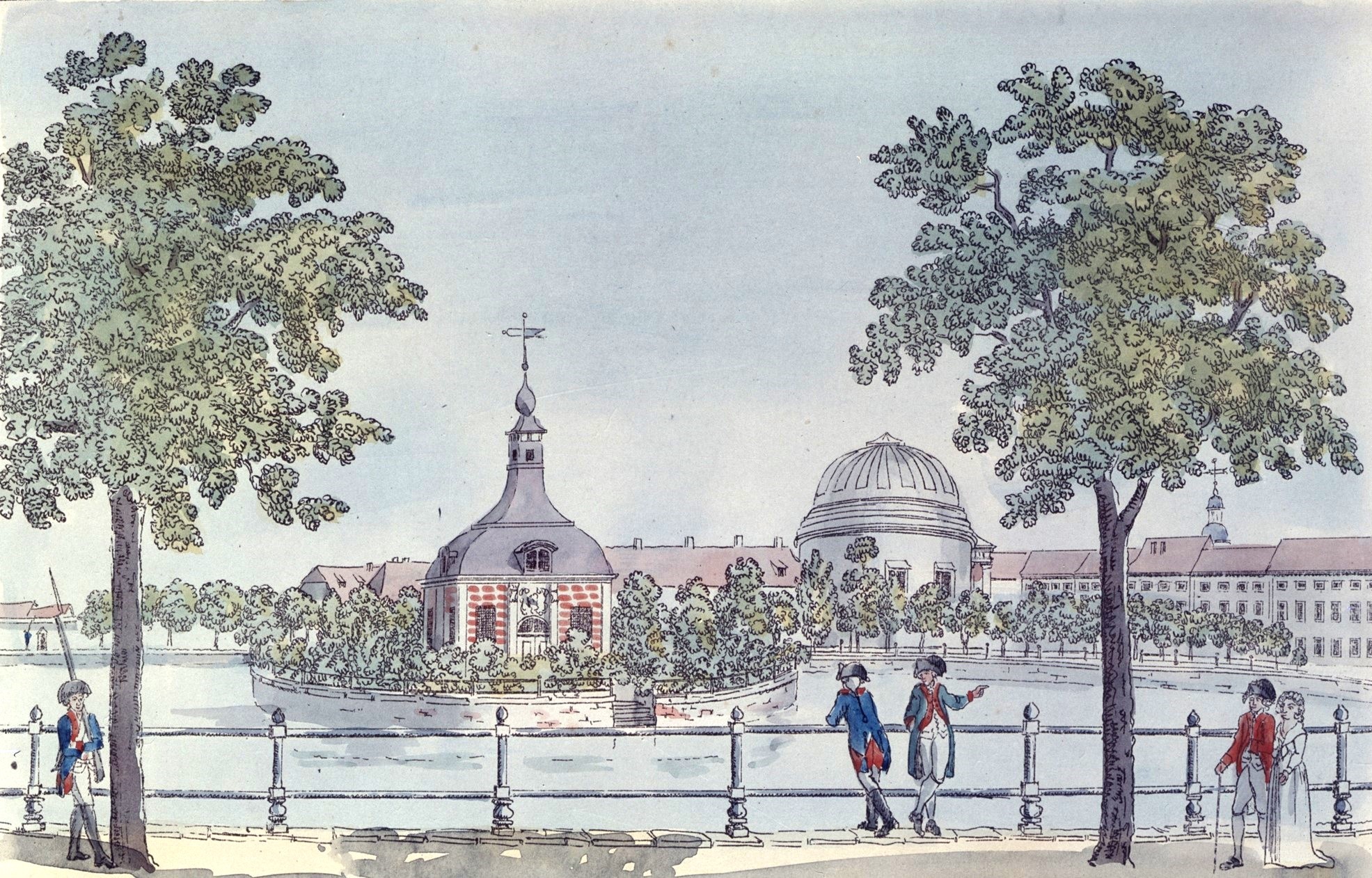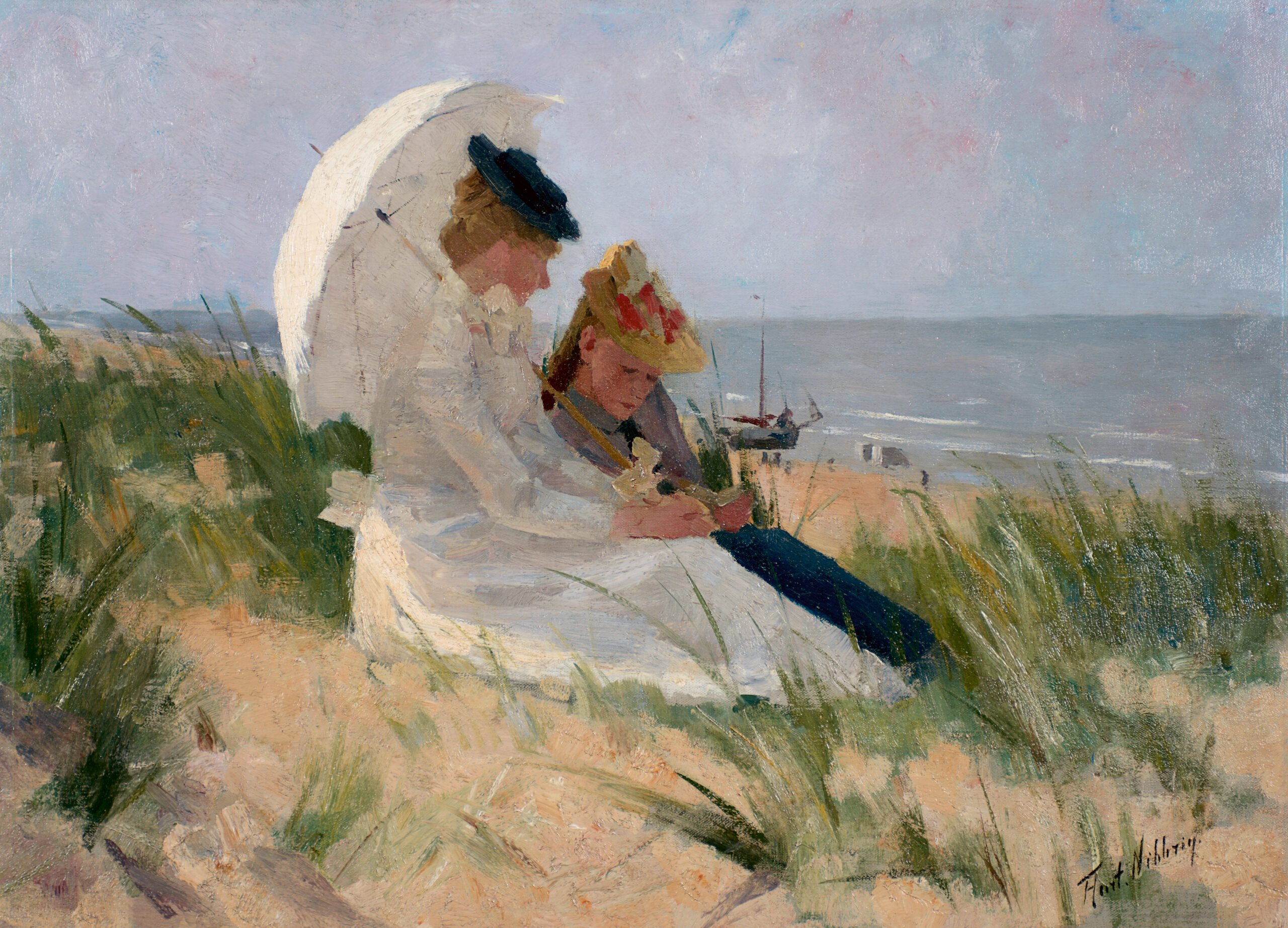
Hoge verwachtingen!
From 8 July, the Museum Barberini presents the exhibition “Clouds and Light. Impressionism in Holland” and shows with over 100 paintings how artists such as Johan Barthold Jongkind, Vincent van Gogh, Jacoba van Heemskerck and Piet Mondrian were inspired by French influences to create their very own, Dutch form of Impressionism.
Impulses from France
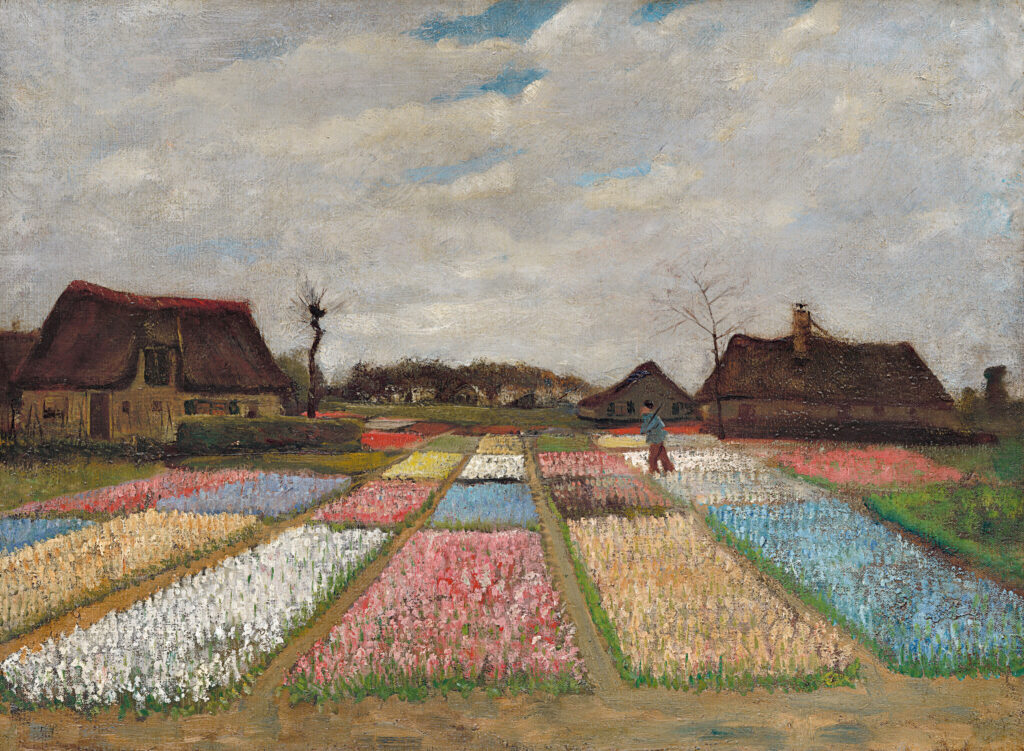
Landscape painting originated in the Netherlands. The realism of the Old Masters of the 17th century long remained the standard to which painters had to compete. When French artists began painting under the open sky in the forest of Fontainebleau in the 1830s and made the experience of the moment the subject of their pictures, they laid the foundations for the artistic movement of Impressionism. Only a little later, at the end of the 1840s, painters in the Netherlands also began to work en plein air, under the open sky, and they too first sought out a primeval forest for their experiments with light and shadow. In Oosterbeek near Arnhem, an artists’ colony developed that attracted numerous painters over decades. There they studied light and shadow, reflections on water surfaces or the effect of backlighting. The artists moved away from idealising or romantic landscape compositions and aimed for a realistic depiction of nature.
Polders and Mills, Coast and City Life
Around 1870 The Hague became the artistic centre of Holland. The painters of the Hague School depicted the nearby North Sea coast and the flat polders with their meadows and cows, canals and windmills, which were considered typical of the Dutch landscape. Their panorama-like paintings with low horizons and wide grey skies do not require any narrative and ignore the changes of modern times such as railways or telegraph lines. The realistic landscape portrayals depicted a section of reality and at the same time reinforced the idea of what constituted one’s own landscape.
While the painters of the Hague School continued to adhere to their themes and painting style in the 1890s and beyond, the following generation focused their work on the city. The artists of the style known as Amsterdam Impressionism were open to modernity in terms of both their technique and their subjects. Rapid brushstrokes and compositional incisions – as also used by the French Impressionists – have a momentary effect like photographs. The dynamics of city life with all its facets were the focus. Fashion shops, electric lights or horse trams were the signatures of the present. These painters were only interested in the coast with a view to the beach as a place of leisure and pleasure
While the painters of the Hague School continued to adhere to their themes and painting style in the 1890s and beyond, the following generation focused their work on the city. The artists of the style known as Amsterdam Impressionism were open to modernity in terms of both their technique and their subjects. Rapid brushstrokes and compositional incisions – as also used by the French Impressionists – have a momentary effect like photographs. The dynamics of city life with all its facets were the focus. Fashion shops, electric lights or horse trams were the signatures of the present. These painters were only interested in the coast with a view to the beach as a place of leisure and pleasure
From Luminism to Cubism
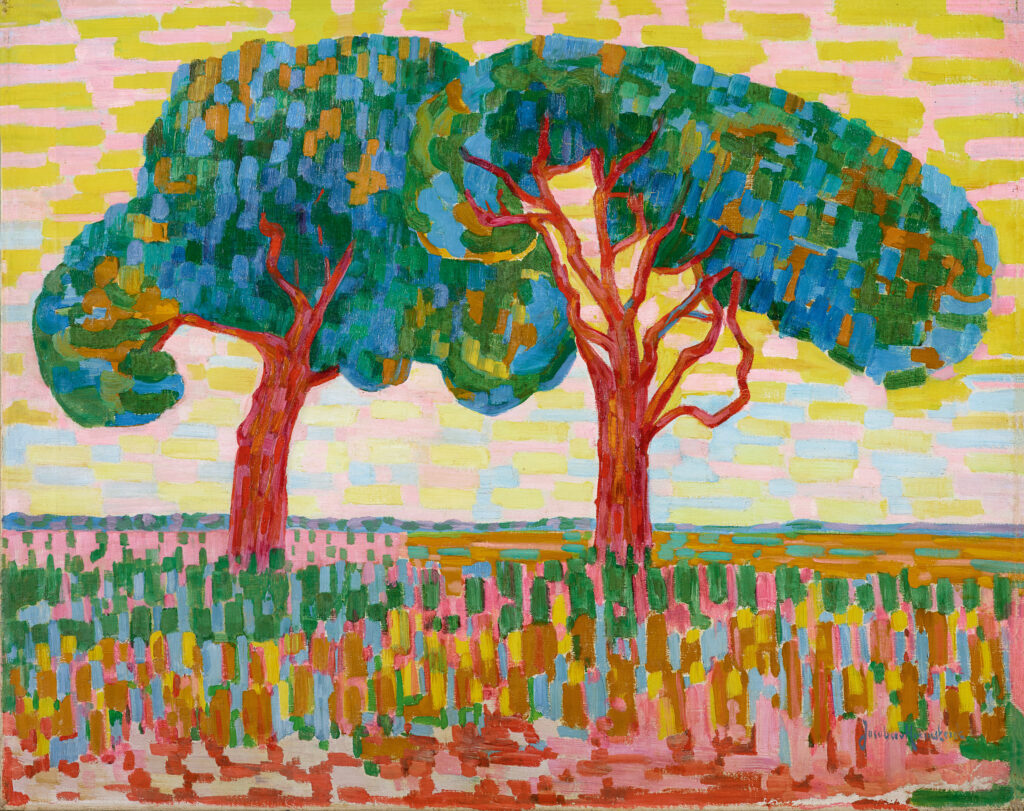
In the 1890s, Pointillism brought a hitherto unknown intensity of colour to Dutch art. This painting technique, which had been developed in France, constructed its pictorial subjects through dots of unmixed colours that were carefully juxtaposed. The pointillists considered the visualisation of light and colour to be more important than the subject of the picture. The unleashing of colour pursued by the Fauvists in Paris around 1905 arrived shortly afterwards with the artists in Holland. In the style known as Luminism, colour no longer served the naturalistic depiction of reality and was no longer bound to specific objects. It took on a life of its own and became a vehicle of expression. The effect of light and shadow continued to be a theme; mills or trees remained recognisable forms, but were alienated by bright, unmixed colours. It was no longer a matter of depicting the perception of nature, but of expressing individual feeling. The hitherto unknown break with the tradition of realism disturbed many contemporary viewers.
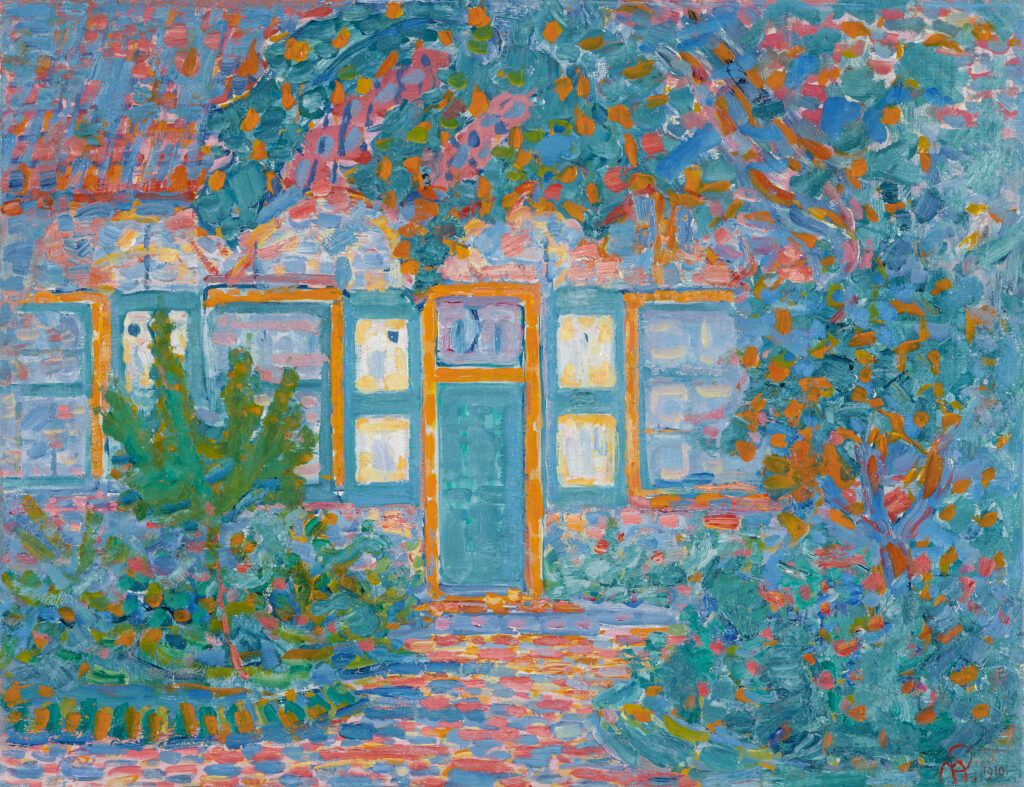
After 1910, as in other European countries, the avant-garde in the Netherlands split into different directions that developed simultaneously. The speed of the development of the artistic language also granted freedom in the choice of means of expression. Colour and form now seemed more variable than ever before. Painters who had begun their artistic development in the late 1890s or later each experimented with different procedures for a while. The cubist breakdown of forms, their expressionist exaggeration or their dissolution in abstraction moved landscape depictions further and further away from the reproduction of the visible world.
The exhibition Clouds and Light. Impressionism in Holland (8 July to 22 October 2023) brings together around 100 works by some 40 artists, including Johan Barthold Jongkind, Vincent van Gogh, Jacoba van Heemskerck and Piet Mondrian. Lenders include the Rijksmuseum and the Stedelijk Museum in Amsterdam, the Kunstmuseum Den Haag, the Dordrechts Museum, the Kröller Müller-Museum in Otterlo, and the Singer Museum in Laren. An exhibition of the Museum Barberini, Potsdam, in cooperation with the Kunstmuseum Den Haag. Under the patronage of the Ambassador of the Kingdom of the Netherlands to Germany, His Excellency Ronald van Roeden.
Learn More
In this video you can learn more about art in the Netherlands between the 1840s and the 1910s, about the impulses from France and the Dutch light, about windmills and the role of artists’ villages in the international success of Dutch art:
On the free Barberini App you can already discover the city tour “Holland in Potsdam”, which takes you to 20 different places in the capital of Brandenburg with exciting Holland references. For more information about the exhibition, tickets, event tips and background information, visit the museum’s website: www.museum-barberini.de
Header Image: Ferdinand Hart Nibbrig: At the Dunes, Zandvoort, 1891-1892, Singer Laren, gift of P. J. Hart Nibbrig 1981

